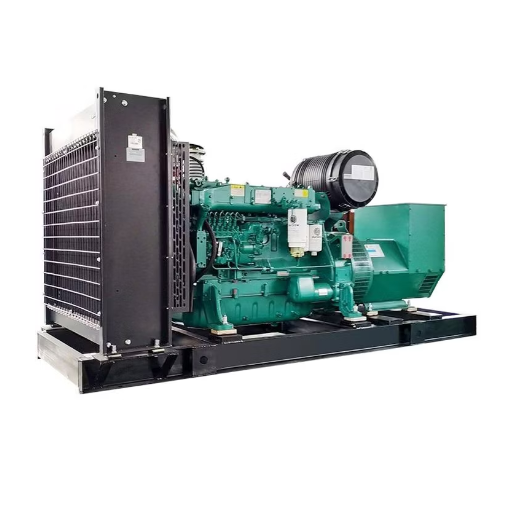Portable generators have become indispensable tools for a wide range of needs—from ensuring backup power during outages to supporting outdoor activities or remote job sites. However, with a variety of models catering to different budgets and use cases, choosing the right portable generator can be a daunting task. This guide aims to simplify your decision-making process by providing a detailed overview of the top portable generators available on the market, organized to meet different financial constraints without compromising performance or reliability. Whether you’re searching for an economical option for occasional home use or a high-performance unit for demanding applications, this comprehensive review will help you identify the ideal portable generator to match both your requirements and your budget.
How do I choose the right portable generator for camping and outdoor activities?
Best portable generators for RV and camping trips
In my search for a portable generator for RV and camping trips, I often look for models that balance power, portability, and efficiency.
- Wattage: Starting and running watts needed by an RV owner is essential. For RV air conditioners, refrigerators, or microwaves, a generator with a minimum of 3,000–4,000 watts is suitable, while smaller devices will need fewer watts.
- Fuel Type and Efficiency: I give preference to dual-fuel propane and gasoline generators for flexibility, In addition to propane generators, I also look for inverter generators for fuel efficiency and quieter operations.
- Portability: Critical factors here are the design and weight. Any unit below 100 pounds and comes with handles or wheelsthat are easier to transport and manage during outdoor trips.
- Noise Level: Ideally for camping environments noise output of 50-60 decibels will get the job done.
- Run Time: A tank run time of 8 – 12 hours at a 50% load is ideal for uninterrupted use during overnight camping stays.
This RV generator purchase checklist carefully examines the features of the generator and makes the selections with full confidence.
Fuel efficiency considerations for outdoor use
Whenever I am looking for a generator to use outdoors, I always ensure the models that I choose have a steady output and minimal fuel consumption. Referenced below are the key factors I examine:
- Fuel Type: The primary point of focus is gasoline, propane, and dual-fuel systems. I normally use propane models as they tend to burn cleaner, however, dual-fuel systems are still a good alternative. They offer flexibility depending on availability.
- Fuel Tank Capacity: I look for capacities ranging from 3 to 6 gallons. This is the most effective size as a larger fuel tank often means longer operating times. I am looking for this size so that I can undertake extended trips.
- Load Specific Efficiency: The most efficient generators should achieve around 0.2 – 0.25 gallons per hour for fuel utilization and should operate at least 20% above the maximum load.
- Idle Control Technology: Generators with ECO-mode or smart throttle technology facilitate the automatic adaption of the engine speed to the load, making idle control much easier under lower demand conditions.
- Weight-to-Efficiency Ratio: I make sure that the generator is still portable and easy to use so that it remains practical for camping or RV use whilst also aligning with fuel performance.
These focal points, together with my focus on efficient design engines, enable me to effortlessly select a generator that utilizes fuel appropriately whilst catering to my outdoor energy requirements.
What are the advantages of inverter generators over conventional models?
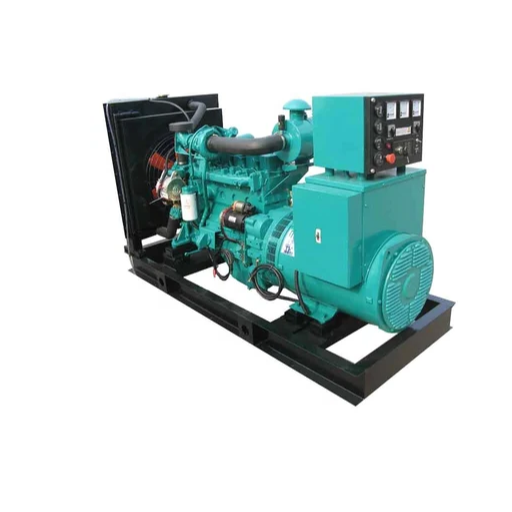
Understanding inverter technology and its benefits
In my opinion, advanced design and enhanced inverter functionality give inverter generators an edge over conventional models. One of the main advantages is the ability of inverter generators to provide clean power. The microprocessor in an inverter generator controls the frequency of the AC power which makes the product stable. In addition to that, it makes a THD of less than 3%, which works great for sensitive equipment like laptops and medical devices. Because the microprocessor maintains a uniform frequency, the power becomes much more stable.
Furthermore, inverter generators are extremely fuel efficient too. This is a direct result of their ability to modify the engine speed to the load. For instance, a 2000-watt inverter generator uses diminutive fuel while operating at a 25% load in contrast to a standard generator that uses much more fuel. Another key advantage is that inverter generators are much more compact and lightweight than traditional models. For camping or mobile applications, inverter generators are much more convenient because they have a power-to-weight ratio averaging between 1.5 to 2 pounds per watt.
Their quieter operation is another critical factor. Thanks to their variable speed functionality and advanced muffler designs, inverter generators utilize noise levels that range from 50-60 decibels at lower loads compared to 70-80 decibels in conventional generators. This helps significantly reduce noise pollution.
Considering these factors which include low THD, ultra fuel consumption, low weight-to-power ratio, and low noise levels, I can conclusively argue that inverter generators are a suitable and efficient option for modern portable power needs.
Comparing power output and fuel consumption of inverter generators
The inverter generators have specified parameters in terms of power output, fuel consumption, and efficiency. First and foremost, inverter generators are created to have a cleaner and stable output power flow, with a THD specification lower than 3%. As a result, they can be used to power sensitive electronic equipment without the risk of damage. In distinction, conventional generators operate with a THD that is greater than 15%, which often results in damage to the covered appliances.
Regarding fuel consumption, inverter generators have systems of adaptive fuel regulation which allow the engine to change its speed depending on the power demand hence adjusting fuel expenditure. This type of inverter generator is usually lighter in fuel consumption by more than twenty percent to thirty percent than the traditional models. A case in point is a 2,000-rated generator which under partial load rates burns anywhere between 0.2-0.3 gallons per hour while its standard counterpart uses 0.4-0.5 gallons an hour.
- Power Output Stability: sensitive electronics are free from damage.
- Fuel Efficiency: 20 to 30 percent improvement relative to modern traditional generators for low and medium loads.
- Adaptive Load Control: Fuel expenditure optimization through technologies like Eco-Throttle.
- Rated Wattage: Sustained continuous output is given while fuel is consumed at a lower rate to achieve greater energy.
I can say that inverter generators with these technical features are overachieving at resource utilization which makes them superior choices in terms of efficiency and reliability.
How much power do I need from an affordable generator?
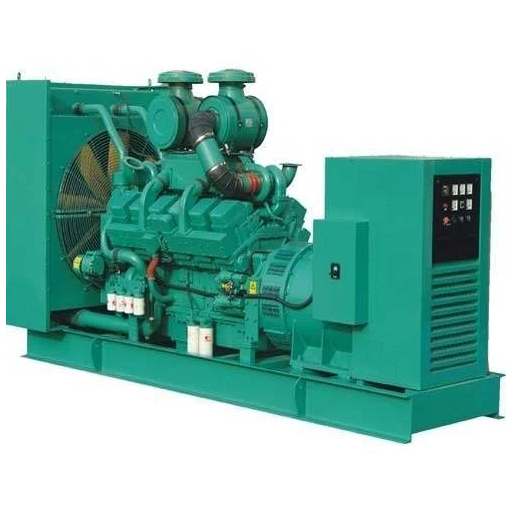
Calculating wattage requirements for essential appliances
In calculating the wattage that will meet the energy needs of vital appliances, both surge and continuous wattage must be taken into account. Surge wattage takes into account the momentary increase in power consumption caused by appliance startup while continuous wattage is the energy required for the ongoing operation of the appliance. Here is how you can do it sequentially:
- Inventory Your Appliances: List down all the devices you would want to use during an outage, like your refrigerator, lights, or microwave.
- Check The Appliances Specifications: Every appliance has a user manual or label that has details regarding its starting and running wattage.
- Calculate The Total Power Requirements: For all items, compute the total running wattage and ensure that you can sustain power without difficulty. Also, for starting wattage, note down the maximum value from your list and make plans accordingly.
- Add 20% To Be On The Safer Side: Always account for a margin of error when attempting to reach maximum wattage. An extra 20% should make a reasonable buffer.
By this approach, you can make sure the specific model of generator you choose will fulfill all your power requirements as well as possible overloads.
Understanding starting watts vs. running watts
Starting watts, or surge watts, is the power needed to start motor-operated appliances. Such devices require a level of power above what can be provided to surpass the initial resistance. For example, starting wattage requirements for refrigerators, air conditioners, power tools, and the like are significantly higher than the running wattage. On the other hand, running watts is the power requirement that keeps the device working under normal conditions.
- Starting Watts: The highest peak an appliance requires to start is referred to as starting watts. This can be two to three times the normal running wattage with motor-heavy appliances.
- Running Watts: The total power required to keep the device in operation without shutting down at any point is referred to as running watts.
Knowing the other two aspects permits the evaluation and selection of a generator that meets starting surge requirements along with continuous power loads. Allowing all device specifications along with a cushion ensures that my operational efficiency is maximized while also preventing system overload.
What fuel types are available for budget-friendly generators?
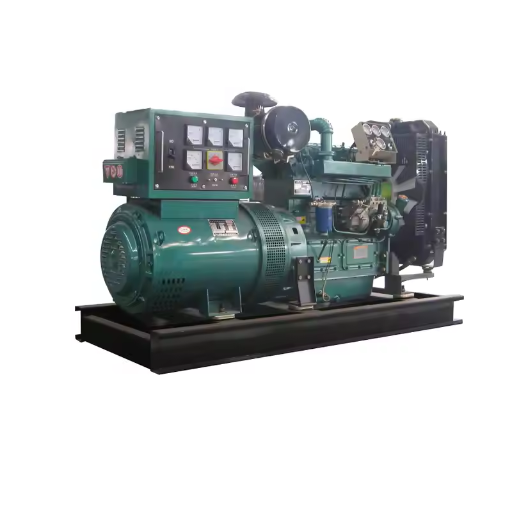
Pros and cons of gasoline-powered generators
Pros:
- Wide Availability: Gasoline is easily accessible in most areas, making it a convenient fuel choice in emergencies or remote locations.
- High Energy Density: Gasoline has a high energy content, enabling generators to produce substantial power output effectively relative to the fuel volume.
- Cost-Effective Initial Investment: Gasoline-powered generators tend to have a lower upfront cost compared to other generator types, making them appealing to budget-conscious buyers.
- Compact and Portable: These generators are often designed to be lightweight and portable, ideal for recreational use or small-scale settings.
Cons:
- Limited Shelf Life: Gasoline degrades over time, especially when not treated with stabilizers, which can cause engine issues if stored for extended periods.
- Higher Operating Costs: Fluctuating gasoline prices can lead to unpredictable long-term fuel expenses.
- Shorter Operating Time Per Refill: Compared to diesel or propane generators, gasoline-powered models may require more frequent refueling due to smaller tank capacities.
- Environmental Impact: Gasoline combustion emits higher levels of carbon monoxide (CO) and other greenhouse gases, necessitating proper ventilation during use.
- Maintenance Requirements: Regular maintenance, including periodic engine oil changes and fuel system checks, is essential to ensure continuous operation and avoid the buildup of deposits.
By understanding these attributes, users can weigh the operational trade-offs of gasoline-powered generators to determine if they align with their power needs and budget constraints.
Exploring dual fuel and propane generator options
Hybrid fuel and propane generators are newer, more efficient, and eco-friendly options compared to traditional gasoline models. Dual fuel generators run on both propane and gasoline. They offer the flexibility of switching between the two types of fuel, which is useful during emergencies or fuel shortages. Propane, in particular, contains distinct advantages owing to its clean combustion properties.
- Fuel Efficiency: Propane burns much cleaner than gasoline. As a result, this improves the life and reduces the maintenance of the engine. However, propane does come with some disadvantages, as it has a lower energy output in comparison to gasoline. Propane will burn approximately 10% less BTU per unit volume compared to gasoline.
- Storage and Shelf Life: Compared to gasoline, which will begin to degrade after a few months without the help of stabilizers, propane will not degrade and will retain its shelf life indefinitely when stored correctly in pressurized tanks.
- Environmental Impact: Compared to gasoline, propane is a preferred choice for reducing environmental impact, as it emits significantly lesser levels of carbon monoxide (CO) and other greenhouse gases.
- Power Output Consistency: Because of the difference in energy density when switching between propane and gasoline, dual fuel generators are known to have a change in power output. For instance, a 7,500-watt generator will output around 6,750 watts while operating on propane.
Utilizing a dual-fuel or propane generator enables me to achieve reliable power generation while simultaneously achieving lower emissions and increased energy storage capacity. It is necessary to analyze certain use cases, runtime needs, and environmental considerations to choose one of these alternatives.
How do I maintain my affordable generator for optimal performance?
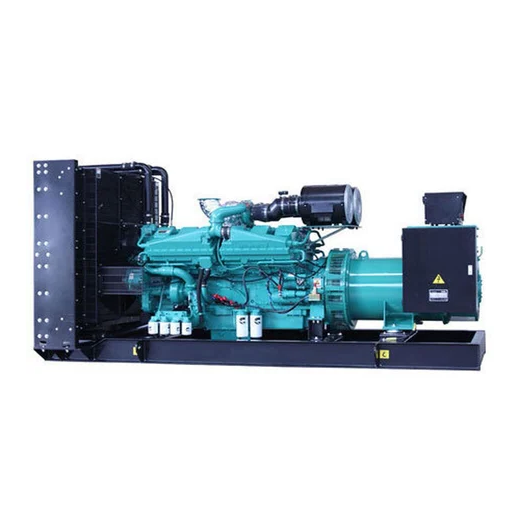
Essential maintenance tasks for portable generators
- Changes to Oil: After the initial 20-30 hours, perform the first oil change and subsequent ones every 50 to 100 hours on the record. Follow melting workflow for incorporating new oils by region temperature. For example, during hotter spells, SAE 10W-30 grade engine oil comes in handy.
- Air Filter Customization: To make sure that quality combustion is achieved along with proper airflow the air filter should be replaced or cleaned once every 50 hours or monthly.
- Periodic load testing: To check that all components are operating and working properly, use the generator under load for a short period at least once a month. Doing so will help to ensure moisture build-up does not occur.
- Check and tighten hardware: Bolts, nuts, and other fasteners need to be checked regularly as they tend to loosen during operation due to vibrations.
- Clean the generator: Clean any dust, dirt, or debris from the generator’s surface and cooling vents to enhance efficiency and reduce the chances of overheating.
Though these measures might seem simple, practicing them regularly helps to avoid mechanical failures and downtimes which is invaluable for portable generators. Always remember to refer to your user manual for any maintenance steps unique to your model.
Tips for proper generator storage and longevity
Here’s my expert synthesis and advice based on the storage and sustainability practices of a generator. Correct storing practices must be followed to ensure a generator continues working properly over the years.
- Stabilize the fuel: If the generator is expected to stand for more than 30 days, the fuel tank must be drained, or a fuel stabilizer must be added to avoid the fuel getting stale. Ethanol-blended fuels may cause a gum or varnish build-up. A fuel stabilizer helps in system preservation for a maximum of twelve months.
- Scope of Improvement: Generators must always be stored in a non-humid place that is cool with fresh air circulation. Shrinkage of internal components is caused by locations with extreme levels of moisture and temperature, which need to be avoided.
- Battery maintenance: Disconnect the battery on a generator with the intent to store it for an extended period. Check and charge the battery every 3 months to avoid sulfation and losing charge.
- Protect from dust and debris: Protecting it from dust, dirt, and other contaminants is important, hence put a cover on it, but ensure the device is fully dry to trap no moisture.
- Regularly start the engine: Every one to two months, you should start the generator and run it for about 10 to 15 minutes. This helps lubricate all the moving parts, as well as prevent seals from drying out.
- Check oil level and change if needed: While storing the generator, oil should be changed to the type specified in your manual (for example, SAE 10W-30). This prevents the oil from gumming up and makes sure the generator is ready to go in the future.
- Provide adequate ventilation during functional test runs: If the generator is tested while in storage, make sure it is done in a well-ventilated area to reduce the risk of carbon monoxide poisoning.
Implementing these technical measures in the long run will prolong the life of your generator, as well as ensure it is ready to use at a moment’s notice. Model-specific recommendations for storage will be found in the user manual.
Reference sources
Frequently Asked Questions (FAQs)
Q: What are the advantages of portable generators over standby generators?
A: Portable generators offer several advantages over standby generators, including lower cost, mobility, and versatility. They can be easily moved and used for various purposes such as camping, tailgating, or emergency backup power. Portable generators are also easier to store and maintain compared to standby generators, which are permanently installed and require professional installation.
Q: How do I choose the right size portable generator for home backup?
A: To choose the right size portable generator for home backup, consider the following steps: 1. List essential appliances and their wattage requirements. 2. Calculate the total running watts and starting watts needed. 3. Add a 20% buffer for future needs. 4. Choose a generator that can handle your power needs, considering both running and peak wattage.
Q: Can portable generators run on different fuel types?
A: Yes, portable generators can run on various fuel types. The most common fuel types are: 1. Gasoline: Most widely available and used. 2. Propane: Cleaner burning and longer shelf life. 3. Diesel: More efficient and longer-running. 4. Dual fuel: Can use both gasoline and propane. Some generators, offer dual fuel capability, allowing you to switch between gasoline and propane for added convenience and flexibility.
Q: How do I maintain my portable generator to ensure it’s ready for emergencies?
A: To maintain your portable generator for emergencies: 1. Run it monthly for 15-20 minutes. 2. Keep fresh fuel on hand or use fuel stabilizers. 3. Change the oil and air filter regularly. 4. Check and clean the spark plug. 5. Inspect and clean the carburetor if necessary. 6. Store it in a dry, cool place. 7. For long-term storage, drain the fuel or use a fuel stabilizer. Regular maintenance ensures your generator will be ready when you need it most, such as during power outages or natural disasters.
Q: What safety precautions should I follow when using a portable generator?
A: When using a portable generator, follow these safety precautions: 1. Never operate indoors or in enclosed spaces to avoid carbon monoxide poisoning. 2. Keep the generator at least 20 feet away from your home and away from windows and doors. 3. Use proper outdoor-rated extension cords. 4. Never refuel a hot or running generator. 5. Install carbon monoxide detectors in your home. 6. Ground the generator properly to prevent electrical shock. 7. Keep the generator dry and protected from rain or snow. Following these guidelines will help ensure the safe operation of your portable power equipment.
Q: What is the difference between running watts and peak watts in portable generators?
A: Running watts (or rated watts) refer to the continuous power a generator can produce, while peak watts (or starting watts) represent the maximum power output for short periods. Running watts are used to power devices that require constant electricity, while peak watts are needed to start motors in appliances like refrigerators or air conditioners. When choosing a generator, consider both values to ensure it can handle your power needs, including surge requirements for starting equipment.
Q: How do inverter generators differ from conventional portable generators?
A: Inverter generators, like the Honda EU2200i, differ from conventional portable generators in several ways: 1. They produce cleaner, more stable power with less harmonic distortion, making them safe for sensitive electronics. 2. They’re generally quieter due to advanced muffler designs and engine speed control. 3. They’re more fuel-efficient as the engine adjusts its speed based on the power demand. 4. They’re usually more compact and lightweight. 5. They often feature parallel capability, allowing you to connect two units for increased power output. Inverter generators typically cost more but offer advantages in terms of power quality, efficiency, and noise levels.
Q: Can I use a portable generator with solar panels for a hybrid power solution?
A: Yes, you can create a hybrid power solution by combining a portable generator with solar panels. This setup can provide several benefits: 1. Reduced fuel consumption and emissions. 2. Extended run time during prolonged power outages. 3. Silent operation during daylight hours. 4. Backup power when solar energy is insufficient. To implement this solution, you’ll need a generator with DC output, solar panels, a charge controller, and a battery bank.
Q: How do I properly size a generator for emergency preparedness?
A: To properly size a generator for emergency preparedness: 1. List essential items you need to power during an outage (e.g., refrigerator, lights, heating/cooling). 2. Calculate the starting and running wattage for each item. 3. Determine which items you’ll run simultaneously. 4. Add up the highest starting wattage and the running wattages of other items. 5. Add a 20% buffer for unexpected needs. 6. Choose a generator that meets or exceeds this total wattage. Consider factors like fuel type, run time, and portability when selecting your emergency backup power solution.
Q: What are the benefits of using a lithium battery-powered portable power station?
A: Lithium battery-powered portable power stations offer several advantages: 1. Silent operation, ideal for indoor use or noise-sensitive environments. 2. No emissions, making them safe for indoor use. 3. Low maintenance requirements compared to fuel-powered generators. 4. Can be recharged via solar panels, wall outlets, or car chargers. 5. Lightweight and highly portable. 6. Provide clean power suitable for sensitive electronics. 7. No fuel storage or stabilization is needed. While they may have lower power output compared to traditional generators, lithium battery power stations are excellent for small to medium power needs and offer great convenience for activities like camping or light emergency backup.



